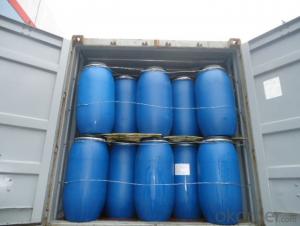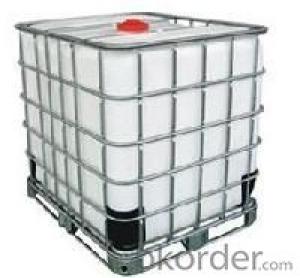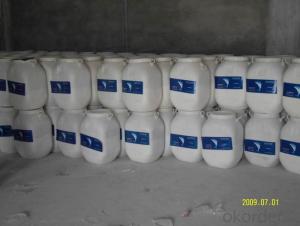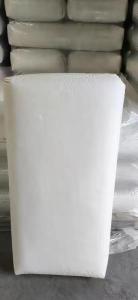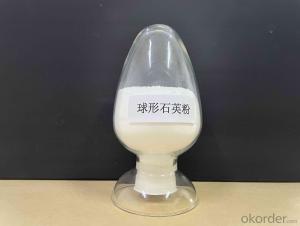Sodium Hypochlorite Solution National Standard Quality
- Loading Port:
- Tianjin
- Payment Terms:
- TT OR LC
- Min Order Qty:
- 25 m.t.
- Supply Capability:
- 6000 m.t./month
OKorder Service Pledge
OKorder Financial Service
You Might Also Like
Sodium Hypochlorite
CAS NO: 7681-52-9
Chemical Formula: NaClO
Molecular Weight: 74.44
Appearance: Yellow transparent Liquid
Standard: HG/T2498-1993
Specification:
Available Chlorine: 8%-16%
NaOH: 1% Max
Transportation Info:
Class: 8 UN NO: 1791 PG:III

Application:
Disinfection for swimming pool, drinking water, cooling tower and sewage and waste water, food, and farming, hospital, school, station and household etc
Good bleaching and oxidation in paper and dye industry.
Normal Packing: 30kg drum, 1200kg IBC Tank
sodium hypochlorite 10%-15% for disinfectant Product details
CAS No.: 7681-52-9
Other Names: Sodium Hypochlorite
MF: NaOCl
EINECS No.: 231-668-3
Place of Origin: Tianjin China (Mainland)
Purity: 10%-13%
Classification: General Reagents
Brand Name: Xibeier Sodium Hypochlorite
Model Number: TX-SH01
Appearance: Yellowish solution
color: white
Application: For waste water treatment
Specification
NO | Test items | Model Specification | ||
Bb | ||||
I | II | III | ||
Indicators | ||||
1 | Chlorine ( Cl ) ≥ | 13.0 | 12.0 | 10.0 |
2 | Free Alkali ( NaOH ) | 0.1~1.0 | ||
3 | Iron ( Fe ) ≤ | 0.005 | ||
Appearance | Light yellow liquid | |||
- Q:put in a way that a freshman in high school can understand please =)
- enzymes are a type of catalyst
- Q:What is a Catalyst?
- Catalyst is a chemical substance which is used in chemical reactions in relatively small amounts to start up or increase the rate of the reaction without being consumed in the process. For example, Sulfuric Acid is used to dehydrate Ethanol to Ethylene. Enzymes in living beings are biological catalysts. Manganese dioxide, used to decompose Hydrogen Peroxide to Oxygen and Water. For detailed answer.... en.wikipedia.org/wiki/Catalysis
- Q:What is the meaning of catalyst in chemistry?
- In the chemical reaction can change the reaction rate of chemical reaction (increase or decrease) without changing the chemical balance, and its own quality and chemical properties in the chemical reaction before and after the material did not change the catalyst.
- Q:High school chemistry, catalyst activation energy map
- Catalytic reaction is the reaction of the first reaction with the catalyst or attached to the catalyst to form intermediates, and then further reaction to produce products and catalysts, so the amount of catalyst in theory is the same! The activation of these two processes can be reduced! So there will be two peaks! Can be simplified as a peak!
- Q:Is the catalyst in the field of inorganic chemistry?
- The catalyst is a branch of physical chemistry
- Q:Several experiments were carried out using catalysts
- Hydrogen peroxide in the manganese dioxide as a catalyst for decomposition reaction: 2H2O2 == MnO2 == 2H2O + O2 ↑ (laboratory oxygen principle)
- Q:pls give one or two catalysts that are used in the industry for example:Rhodium catalyst in a catalytic converter of a car or the Iron catalyst for making ammoniaTHANKS :)
- i will tell you the hydrogen and carbonmonixide production in indsutry they will use alumina based nickel catalyst for adsorption of gases, at high temperature it will breaks as small molecules like hydrogen, co2, co,ch4, after they will separate them using carbon molecular seives as catalyst. another catalyst for hydrogenation of double bond is copper chromate for sulphur removal from disel and petrol they will use COMOX ( copper and molybdinum catalyst ) after then pass through zinc sulfide with hydrogen gas , the sulfur will removed as a hydrogen sulfide.
- Q:Why can some catalysts be reused in (chemistry)?
- Because the catalyst in the chemical reaction before and after the quality and chemical properties have not changed, so in the chemical reaction can be reused.
- Q:In the chemical reaction, the rate of decomposition reaction is related to the quality of the catalyst?
- There are relationships
- Q:The concept of catalyst in high school chemistry
- Since the catalyst can only change the chemical reaction rate, the catalyst can not increase the mass of the product. The quality of the product depends only on the quality of the reactants.
1. Manufacturer Overview |
|
|---|---|
| Location | |
| Year Established | |
| Annual Output Value | |
| Main Markets | |
| Company Certifications | |
2. Manufacturer Certificates |
|
|---|---|
| a) Certification Name | |
| Range | |
| Reference | |
| Validity Period | |
3. Manufacturer Capability |
|
|---|---|
| a)Trade Capacity | |
| Nearest Port | |
| Export Percentage | |
| No.of Employees in Trade Department | |
| Language Spoken: | |
| b)Factory Information | |
| Factory Size: | |
| No. of Production Lines | |
| Contract Manufacturing | |
| Product Price Range | |
Send your message to us
Sodium Hypochlorite Solution National Standard Quality
- Loading Port:
- Tianjin
- Payment Terms:
- TT OR LC
- Min Order Qty:
- 25 m.t.
- Supply Capability:
- 6000 m.t./month
OKorder Service Pledge
OKorder Financial Service
Similar products
New products
Hot products
Related keywords

